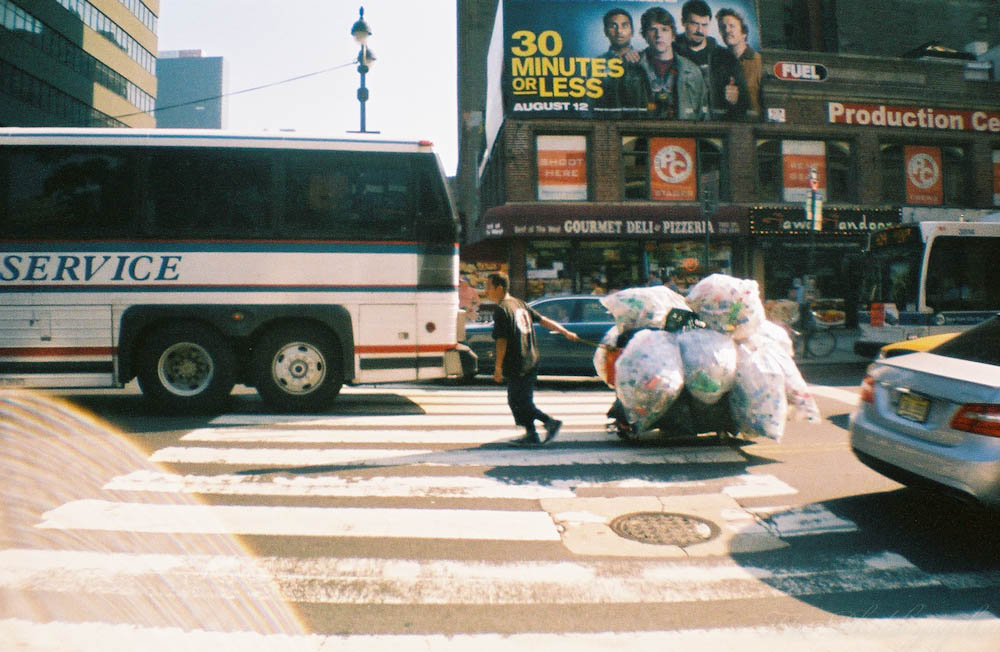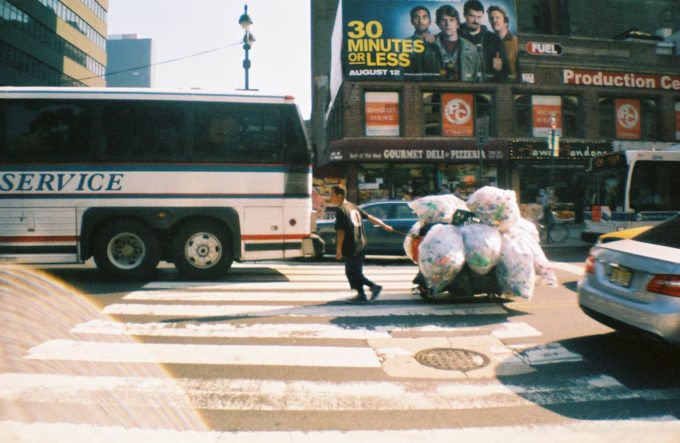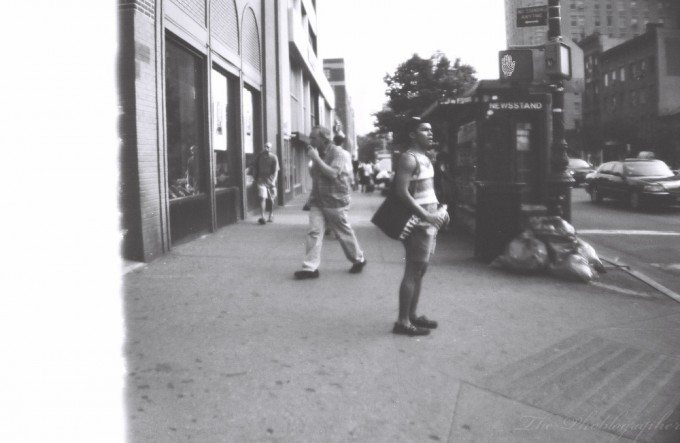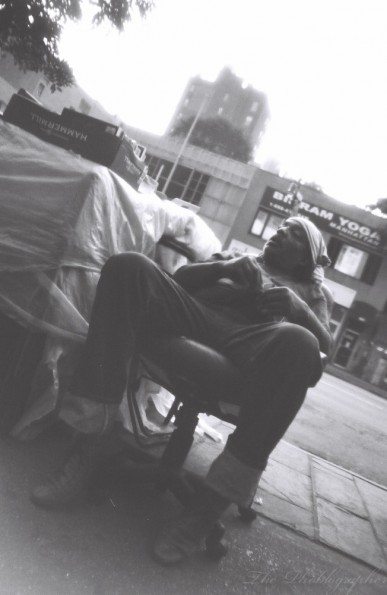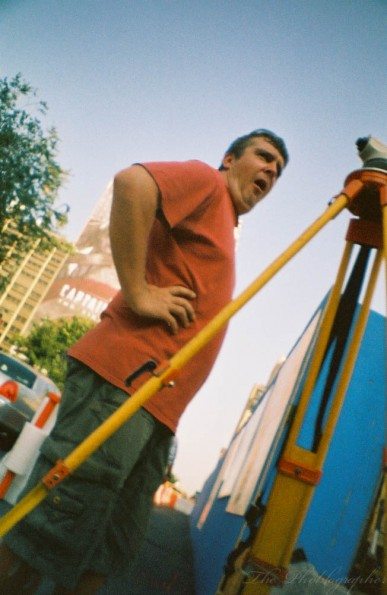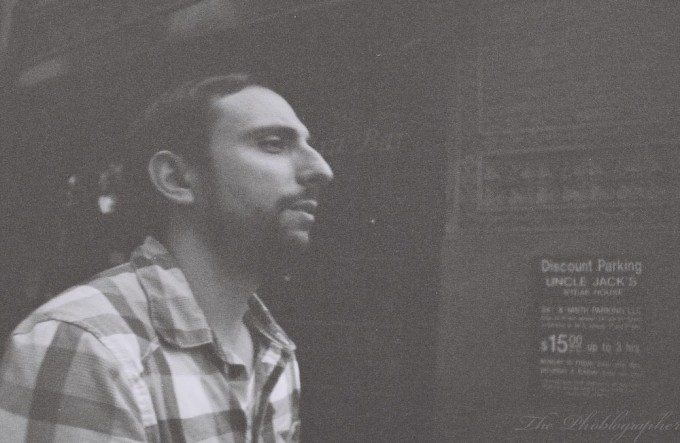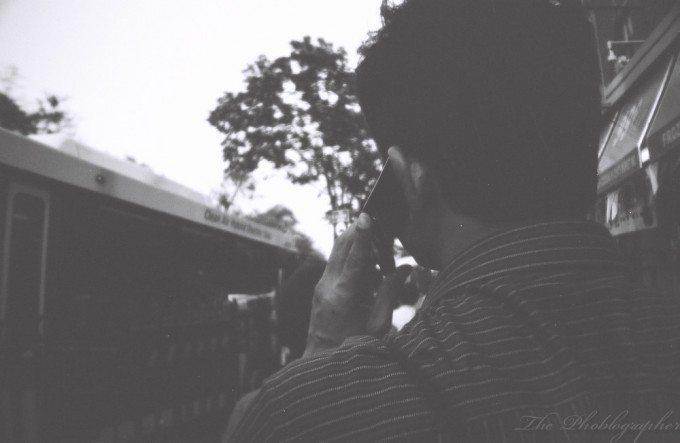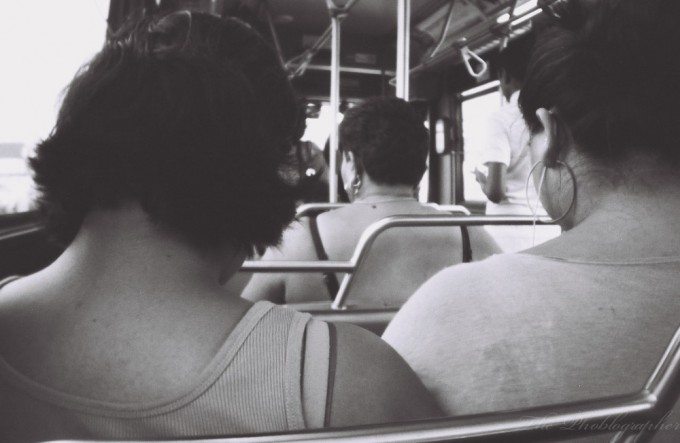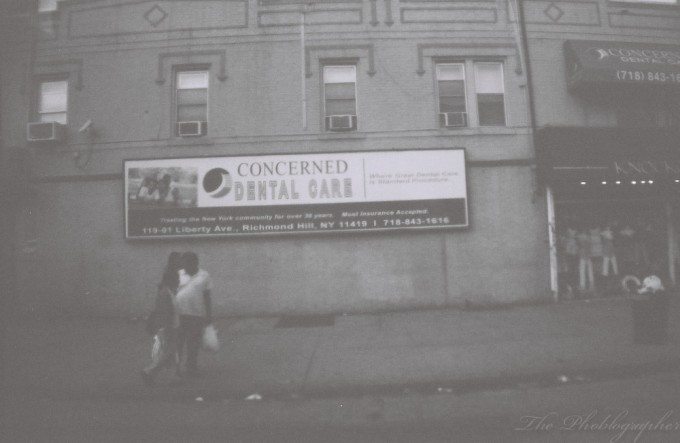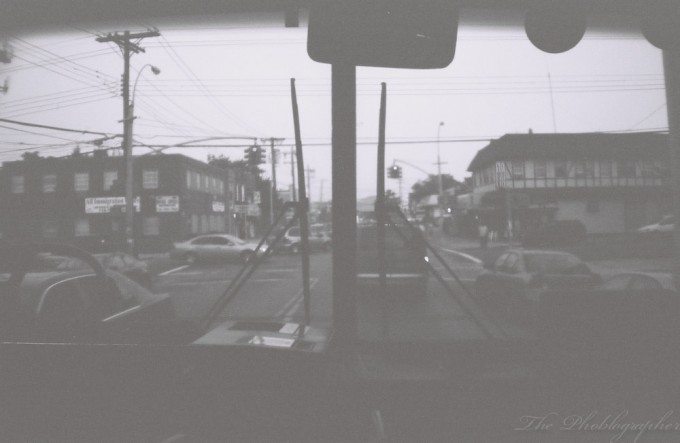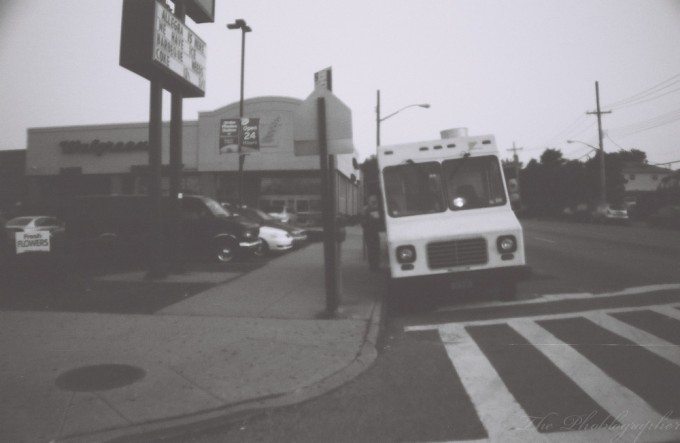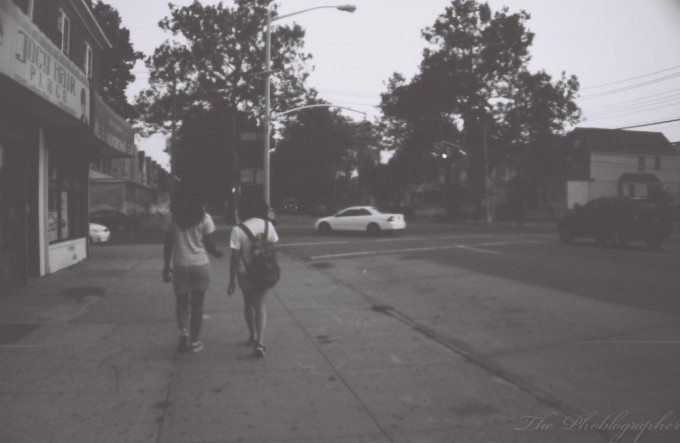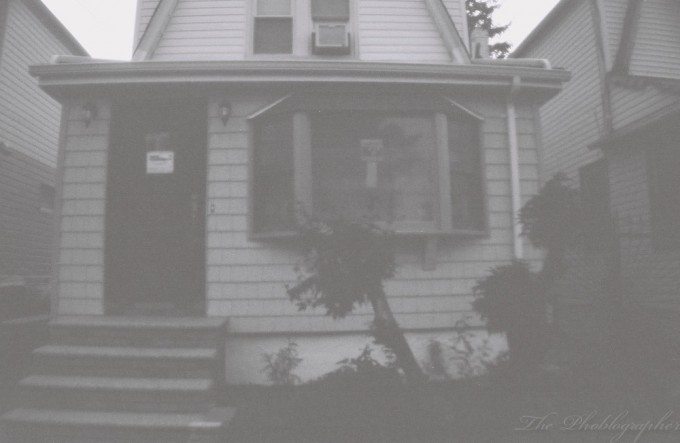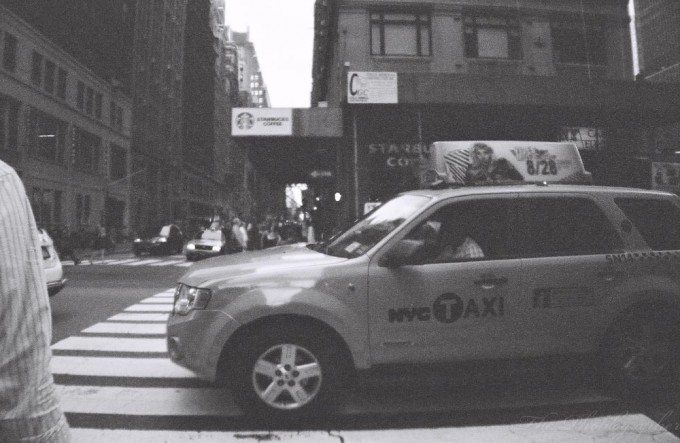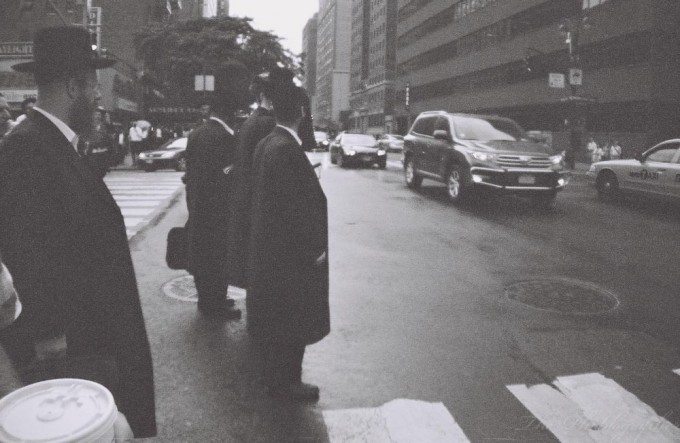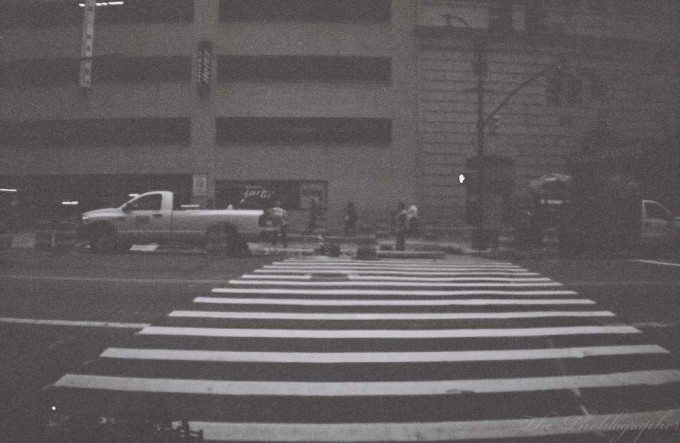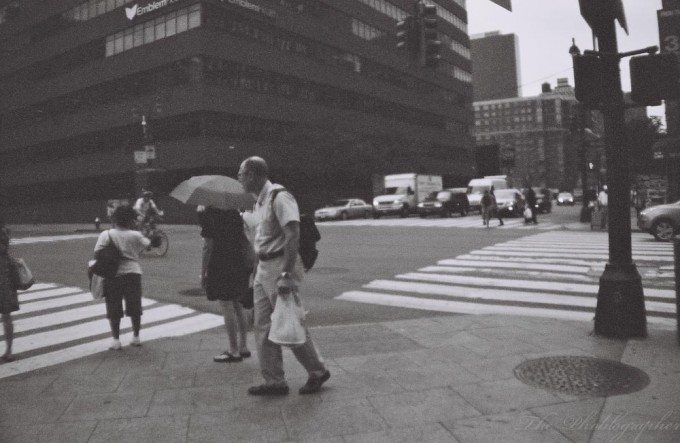
The Lomography La Sardina is the very first Lomography camera I’ve bought. Though they’ve been called toy cameras for many years, the company has been working to rebrand themselves and let go of that moniker. Instead called plastic cameras, the Lomography La Sardina is one of the latest additions to that list.
So can a little film camera really hold its own against the slew of digital cameras out there, let alone my beloved Yashica Electro GSN?
Ergonomics
You can see photos of my camera that I took during my hack.
The Lomography La Sardina looks a lot like a Sardine can, but much thicker. Slap two spools for winding and advancing film on there plus a lens and a viewfinder, and you’ve got yourself a camera.
What’s interesting about this little cam is that the only place that you can attach a flash is on the side of the camera. So that means say good bye to bounce flash and the ring flash. Seriously, a ring flash for La Sardina would be awesome.
There are two different tripod sockets, one is on the side and one is on the bottom. I’ve stuck my Lens Loop on there and it has become the strap that stays on that camera.
Tech Specs
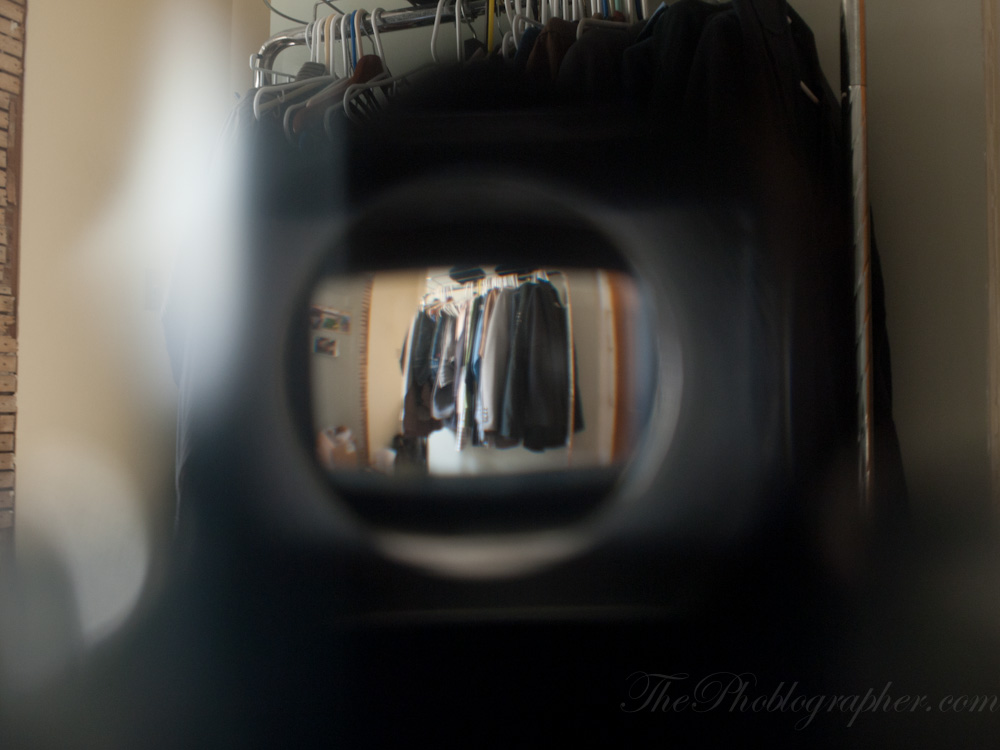
First off, know that the La Sardina has a 22mm F/8 lens and that the shutter speed is fixed to 1/100th of a second according to the manual. It’s all plastic as well and takes 35mm film.
Hopefully, they’ll come out with an instant camera back for it.
By the way, the image above is a scene from inside the viewfinder. Though I’m not sure if that’s a 100% equivalent or not. It will give you an idea of just how wide it is.
Focusing
Focusing is done all manually via adjusting the lens element. It shows two markings: one for near (by showing the symbol of a pineapple) and one for far (by showing a symbol of many people.)
And that’s it. Minimum focusing is around 2 and a half feet. Really simple, right? In practice, you just need to get a feel for it all when it comes to adjusting the focusing.
Ease of Use
To use the La Sardina, all you need to do is snap a photo with the shutter button, advance the film, and that’s all. Oh, and you need to focus. Unfortunately, the viewfinder doesn’t show you what’s through the lens, so you’ll need to guess when it comes to focusing and remember that it is slightly off above the lens.
To rewind the film, just press the back release button while holding the back in place, and then rewind it in the opposite direction that you advanced the film.
The top of the camera has different shutter settings. You can recock the shutter for a multiple exposure, shoot in bulb mode, or normal.
Now combine all of these together:
– The fact that you never totally know what you’re focusing on.
– A viewfinder that you hope will give you the image that you want.
– 1/100th shutter speed and f8
And you’ll need to force yourself to shoot and just move on. Additionally, you’ll need to pay attention to more details in the scene, the lighting, etc.
Image Quality
During my test with the Lomography La Sardina, I tested it with Earl Grey 100 film, Ilford XP2, and some expired Agfa 200 film. The Lomography store developed and scanned the negatives themselves.
I’m not going to lie, f8 and 1/100th of a second are real downers. I much prefer to manually dial in my settings because that way I can get the exact look that I want. Sure, there’s a bulb mode on this camera, but how can you possibly shoot at faster than 1/100th of a second if you put something like 800 ISO film in there?
The key to using this camera is to shoot black and white in general. However, if you’re determined to go out and finish a role in a certain lighting, then use color.
By that, I mean that if you know that you’re going to use an entire roll in bright sunlight, go for something like 100 film. Even with my calculations though and knowledge of Sunny 16 metering, using this camera effectively may still be a bit tough to do.
With that said though, I have to admit that when you hit the focus correctly, you can sometimes create some really awesome images. Here are some more samples.
There is amazingly little distortion for a 22mm lens.
The look of the camera is also not intimidating at all, so it will be okay for street photography.
Conclusions
The Lomography La Sardina is a camera that allows me to let go of all my inhibitions about trying to get the image as perfect as possible. Despite this, I still try my hardest to, but I accept the fact that I may not get it at all. With this said, I often also just tend to shoot and not care about the result. Conversely, this is film. And film does cost money. Ideally, I’d love to have every shot count. Because of this, I tend to reach for my Yashica Electro 35 GSN more. If I had the money, I’d actually go for the Leica M7 and 50mm f1.4 Summilux, though my Yashica delivers images that absolutely astound me. My La Sardina often only has black and white film loaded into it, and usually only comes with me in inclement weather because there are no electronics inside. Admittedly, my Yashica will as well because I just love the look of Tri-x and HP2 (these are also probably the best films to put in the La Sardina). Right now though, it has Fuji 800 pro.
Can I recommend it in the end? To be honest, I’m on the fence about this one. I love the light weight, fun look, and wide angle. However, I wish I had more versatility with it or the camera at least had an instant back. My keeper rate goes down tremendously when using this camera. Film is film—and you’re often dialed into a certain ISO setting unless you shoot redscale. I hate the look of redscale though; black and white or color is all I want. With said ISO, you’ll only be able to shoot in a certain light unless you use black and white. Sure, color negative film has some versatility, but I’ve often found it to be not enough. Don’t even get me started on chromes; you’ll need to shoot full manual with those.
A situation in which I will absolutely use this camera is in inclement weather. Rain, snow, sleet, you name it: the La Sardina will be able to handle it with its total lack of electronics.
If you’re a Lomography lover, go for the La Sardina. If you want to force your mind to work more carefully, the La Sardina is also for you. Otherwise, I believe that there are better options out there that are unfortunately more expensive but will reward you in ways that you’ll always be astonished by. With that said though, one can often get a full medium format SLR film kit for around $236 these days.
Occasionally, I will post images from this camera on my Tumblr.
Please Support The Phoblographer
We love to bring you guys the latest and greatest news and gear related stuff. However, we can’t keep doing that unless we have your continued support. If you would like to purchase any of the items mentioned, please do so by clicking our links first and then purchasing the items as we then get a small portion of the sale to help run the website.


